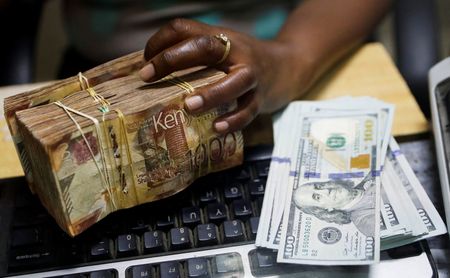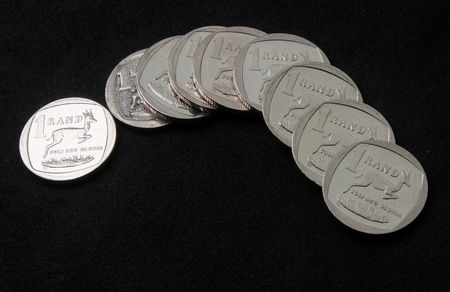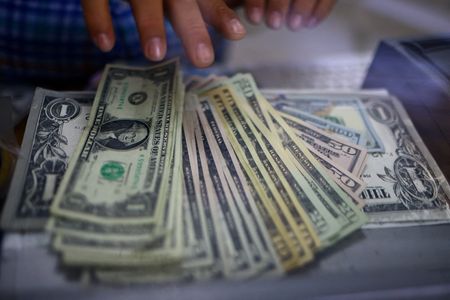By Kevin Buckland and Stefano Rebaudo
(Reuters) – The dollar strengthened on Tuesday after U.S. tariffs on Chinese goods came into effect, triggering swift retaliation from Beijing and prompting a selloff in the Chinese yuan and the Australian dollar.
The Canadian dollar and Mexican peso also weakened, after rising the day before as those countries won a reprieve on their own U.S. tariffs. The euro declined, with Washington threatening the European Union may be next in line for trade levies.
U.S. President Donald Trump’s administration imposed additional 10% tariffs on imports from China from 12:01 a.m. ET on Tuesday (0501 GMT).
“That Trump wants to negotiate is clear, but at the same time, there is a basic idea that tariff revenues should finance tax cuts, and from that perspective, one could wonder if one can go back on tariff plans every time,” said Marcus Widén, an economist at SEB.
The U.S. dollar index – a measure of the value of the greenback relative to a weighted basket of six major foreign currencies – rose 0.15% to 108.6.
China on Tuesday placed tariffs on U.S. imports, renewing a trade war between the world’s top two economies as Trump claimed China was not doing enough to halt the flow of illicit drugs into the United States.
“The previous market optimism on a quick deal (between U.S. and China) still looks uncertain,” said Gary Ng, senior economist at Natixis.
“Even if the two countries can agree on some issues, it is possible to see tariffs being used as a recurrent tool, which can be a key source of market volatility this year.”
The Chinese yuan edged down about 0.35% to 7.3207 per dollar in offshore trading, although that was well back from the record trough reached on Monday of 7.3631 yuan. There is no official yuan trading until Wednesday, with mainland markets still closed for the week-long Lunar New Year holidays.
EURO LOWER
The Australian dollar, which often acts as a liquid proxy for the yuan because the Australian economy is highly exposed to China, fell 0.35% to $0.6206, well above Monday’s low of $0.6085, the weakest level since April 2020.
The euro slid 0.15% to $1.0328, with market participants watching parity.
“The maximum trade war risk premium seen during the first Trump administration was six big figures which would take the euro/dollar to parity,” said George Saravelos, head of forex research at Deutsche Bank.
“A European Central Bank (terminal rate) repricing down to 1.50%, with the Fed (policy path) unchanged, would take the euro/dollar further down to 0.98-0.99 based on current betas.”
Several analysts recently argued that U.S. tariffs would have a deflationary effect on the euro area.
Money markets increased their bets on ECB rate cuts on Monday, pricing in a depo rate at 1.85% in December from 1.95% late on Friday. They are currently discounting 1.88%.
The Canadian dollar lost 0.15% to C$1.4451 against its U.S. counterpart on Tuesday, following a sharp rebound from a low of C$1.4792 on Monday, the weakest level since 2003.
The Mexican peso was flat at 20.3460 per dollar, well above the previous session’s nearly three-year trough at 21.2882.
“Our tracking of trading uncertainty is rising, not falling, suggesting markets will continue to price in a risk premium in FX associated with this theme of disruption,” TD Securities analysts wrote in a note.
TD expects “USDCAD dips will be brief and shallow”, and the currency pair will rise to C$1.50 by end-March, based on Canada’s “relatively weak macro story”, as well as trade uncertainty.
Sterling declined 0.25% to $1.2410, despite Trump’s suggestion that Britain might be spared tariffs.
The U.S. dollar gained 0.5% to 155.50 yen.
(Reporting by Stefano Rebaudo and Kevin Buckland; Editing by Sonali Paul, Kim Coghill and Sharon Singleton)








